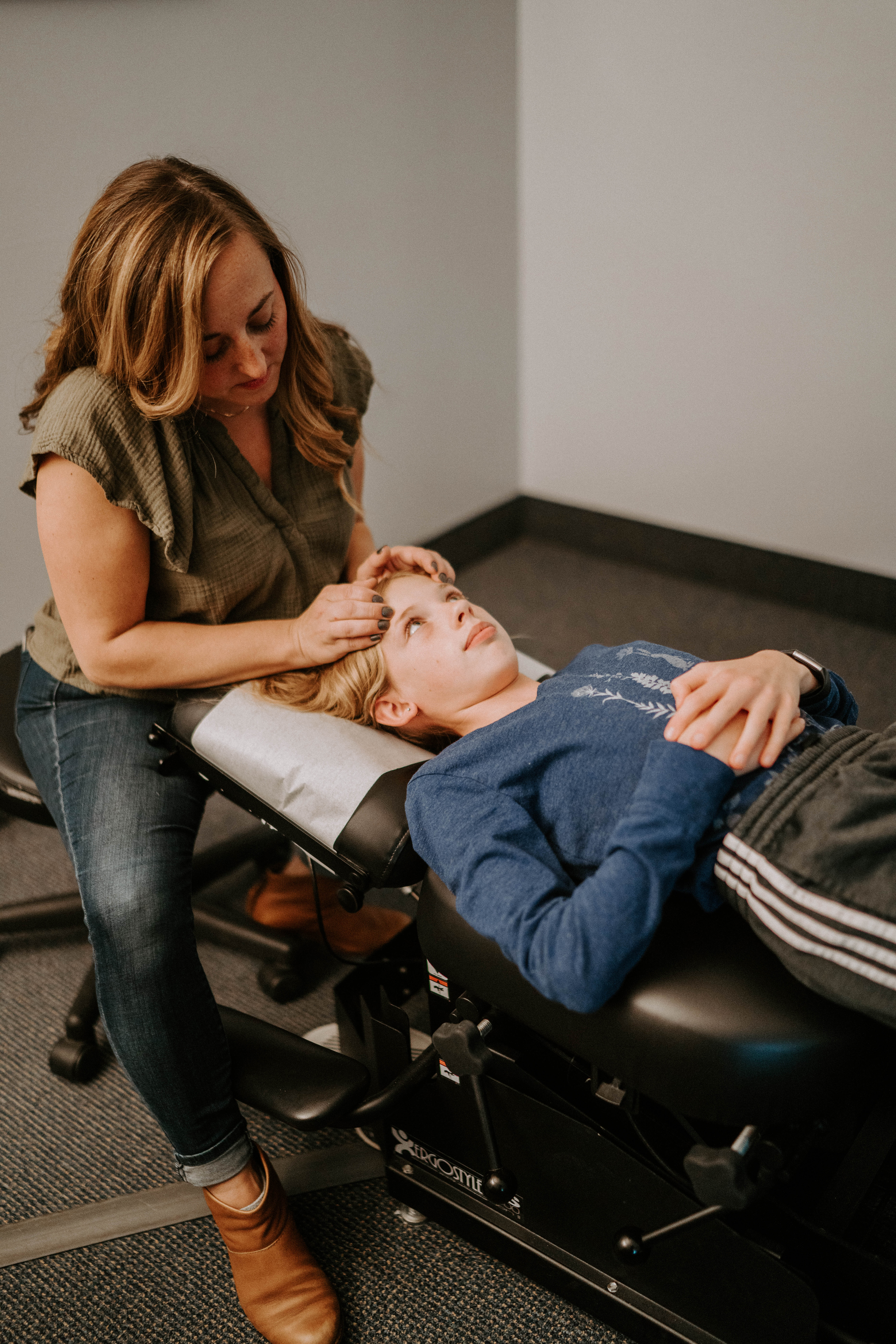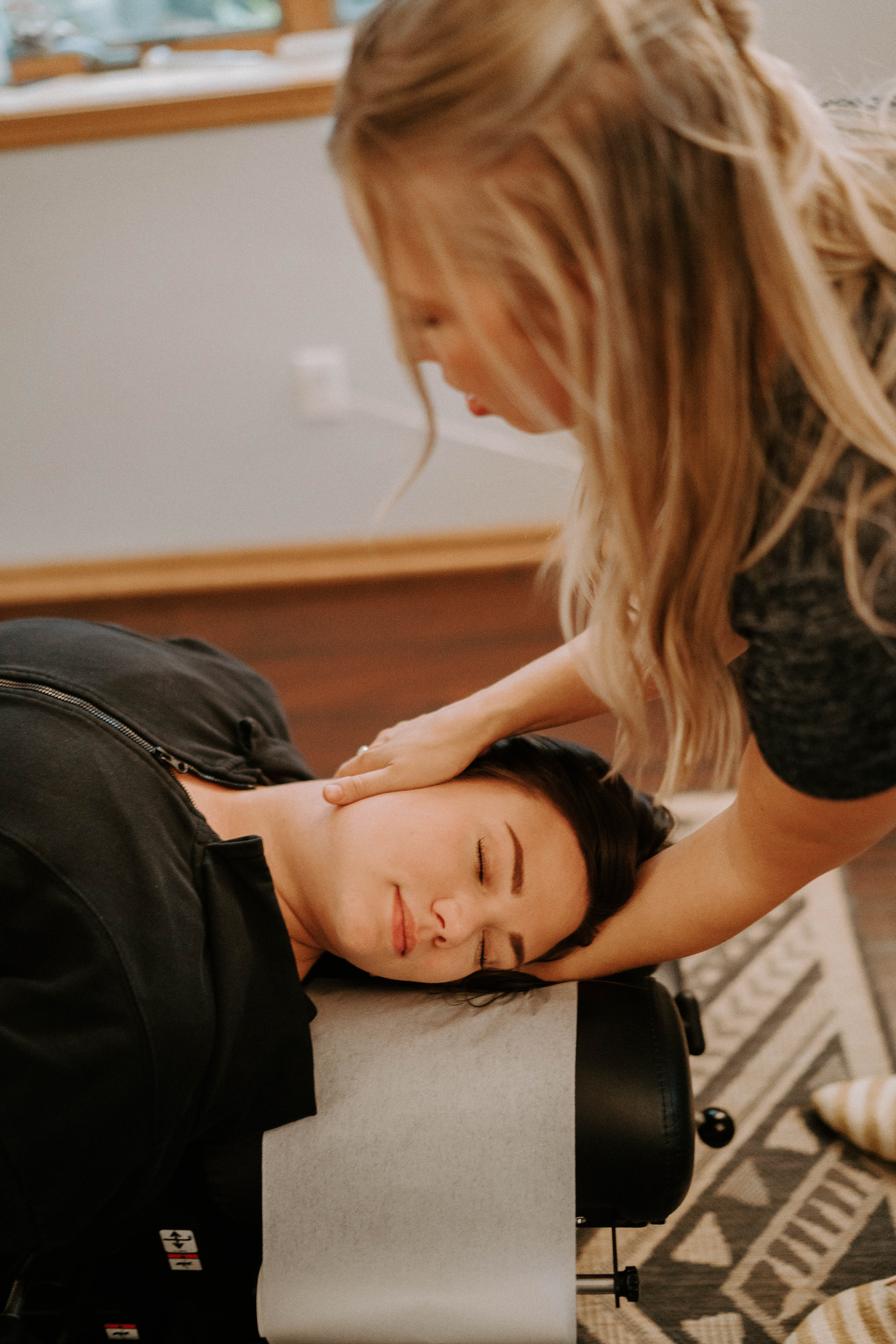WElcome TO
Explore our blog that focuses on holistic care for any and all ages - pediatric well-being, pre/post-natal health, and adult vitality.
THE BLOG

If you’re reading this, chances are you’re on a journey that no one prepared you for. Your child might be battling chronic conditions like seizures, insomnia, anxiety, depression, constipation, or autoimmune issues such as PANS or PANDAS. You’re not alone in this struggle, and today, we want to shed light on a condition that might be the missing piece of your child’s health puzzle: dysautonomia.
The Hidden Epidemic
We’re facing an absolute epidemic of chronic health problems among our teenage and young adult population. The rates of anxiety and depression have skyrocketed, and the sheer number of teens struggling with poor gut health, autoimmune conditions, and even seizures is staggering. As a parent, watching your child struggle with these issues can be overwhelming and leave you feeling helpless.
Traditional medicine often falls short, offering little more than a cocktail of medications to mask symptoms. Many of the teens and young adults we meet are on 3, 4, 5, or even 6 different medications, dealing with side effects that make them feel even worse. The truth is, these medications don’t address the root cause of their health issues.
Connecting the Dots: Dysautonomia
What if we told you that there’s a common thread tying these seemingly unrelated conditions together? It’s called dysautonomia – a dysfunction and imbalance in the autonomic nervous system. Understanding dysautonomia could be the key to unlocking your child’s path to better health and improved quality of life.
What is Dysautonomia?
The autonomic nervous system (ANS) controls all of our body’s automatic functions, like heart rate, blood pressure, digestion, and temperature regulation. It’s made up of two main branches:
- The sympathetic nervous system (our “fight or flight” response)
- The parasympathetic nervous system (our “rest and digest” mode)
These two systems were created to work together seamlessly to maintain balance. However, in dysautonomia, this delicate balance is disrupted, leading to a wide range of symptoms that can affect nearly every body system.
The Two Main Problems of Dysautonomia
- Sympathetic Overdrive: The “fight or flight” system gets stuck in the “on” position.
- Parasympathetic Suppression: The “rest, relax, and regulate” side of the nervous system gets suppressed and shut down.
Because the ANS controls so many major physiological systems and functions in the body, problems start to show up all over, often in a specific sequence:
- Sleep: Difficulty falling asleep and staying asleep, leading to fatigue, exhaustion, and brain fog.
- Digestion: The gut and digestive system require a lot of energy and focus from the nervous system. When stuck in “fight or flight” mode, the body diverts energy away from digestion, leading to various gut issues.
- Immune function and inflammation: A chronic state of stress leaves the body in a constant state of inflammation and suppressed immune function.
- Brain health: When dysautonomia is in full effect, mental, emotional, behavioral, and cognitive capacities are significantly affected.
The “Perfect Storm”: Understanding the Origins of Dysautonomia
Dysautonomia doesn’t develop overnight. It’s often the result of a “Perfect Storm” of factors that can include:
- Prenatal stress
- Birth stress or interventions
- Early childhood stressors
- Environmental toxins
- Poor nutrition
- Chronic infections
Recognizing these factors can help us understand why your child might be experiencing these challenges and guide us in creating a comprehensive healing approach.
Taking Charge of Your Child’s Health
As a parent, you have more power than you might realize to help your child overcome these challenges. Here are some steps you can take:
- Recognize the Signs: Be aware of the symptoms of dysautonomia and how they might manifest in your child. Look for patterns in sleep disturbances, digestive issues, anxiety, and other seemingly unrelated symptoms.
- Seek Proper Care: Traditional medical tests often miss dysautonomia. There is no valid medical testing for dysautonomia, just as there’s no test for the supposed “chemical imbalance” theory behind conditions like ADHD, anxiety, and depression. This is why conventional medicine often misses it 99% of the time. Look for healthcare providers who use Neurological INSiGHT Scans, specifically Heart Rate Variability (HRV) testing. These scans can detect patterns and evidence of dysautonomia and nervous system dysregulation.
- Explore Holistic Approaches: Consider Neurologically-Focused Chiropractic Care, which addresses the root cause of dysautonomia and helps balance the nervous system. This approach has shown remarkable results in helping teens and young adults regain their health and vitality.
- Support Your Child’s Nervous System: Implement stress-reduction techniques, ensure proper nutrition, and create a sleep-friendly environment. Remember, every positive step helps in rebalancing the autonomic nervous system.
- Be Patient and Persistent: Healing takes time. Celebrate small victories and keep moving forward. Your child’s nervous system has likely been out of balance for some time, so be patient as it learns to function optimally again.
- Educate Yourself: The more you understand about dysautonomia and the autonomic nervous system, the better equipped you’ll be to support your child’s healing journey.
Hope for the Future
Parents, don’t let dysautonomia and chronic health challenges hold your child and family back any longer. Thousands of parents and patients every single day are finding hope, answers, and drug-free action steps with Neurologically-Focused Chiropractic Care.
At RCW, our incredible care starts with a consultation and case history, where we ask questions and dive deeper than any doctor ever has to find the real root cause of your teen’s chronic health challenges. Then, we run the INSiGHT Scans to test for dysautonomia, nervous system dysregulation, and more – a process that takes just 15-20 minutes but can absolutely transform your understanding of what’s really going on with your child’s health struggles.
After gathering this vital information, we sit down knee-to-knee at our report of findings visit, show you the scan findings, explain everything, and go over your child’s customized care plan. This comprehensive approach ensures that we’re not just treating symptoms, but addressing the root cause of your child’s health challenges. So please don’t wait, reach out to us today!
Remember, you are your child’s best advocate. By understanding dysautonomia and taking proactive steps, you can help your child not just survive, but thrive!

As a parent, you’ve likely experienced those frustrating moments when it seems like your child catches every bug that goes around. You might have tried everything from strict hand-washing routines to countless supplements, only to find yourself back at square one with another illness. But what if we told you that the key to unlocking your child’s immune health might not be in yet another supplement or medication but in a nerve you may not have heard of? Let’s explore the vagus nerve and how it could be the game-changer in your child’s health journey.
The Vagus Nerve: Your Child’s Hidden Health Superhighway
Imagine a superhighway running through your child’s body, connecting their brain to almost every major organ. That’s the vagus nerve – often called the “wandering nerve” because of how extensively it travels. This incredible nerve plays a crucial role in regulating your child’s immune system, acting as a sophisticated communication channel between the brain and the body.
When the vagus nerve is functioning optimally, it helps maintain what we call the “inflammatory reflex.” It helps ensure that your child’s immune system responds appropriately to threats without going overboard. It’s like having a perfect balance of alertness and calm in their body.
The Science Behind the Vagus Nerve and Immune Function
Let’s break down how this works:
- Detection: When your child’s body encounters a potential threat (like a virus or bacteria), sensory fibers in the vagus nerve detect this and send signals to the brain.
- Processing: The brain processes this information and determines the appropriate response.
- Response: The brain then sends signals back through the vagus nerve to control inflammation and immune response.
- Balance: This back-and-forth communication helps ensure that the immune response is neither too weak (leaving your child vulnerable to infections) nor too strong (potentially leading to issues like allergies or autoimmune conditions).
A well-functioning vagus nerve can lead to:
- Fewer illnesses and quicker recovery times
- Reduced allergic reactions and asthma symptoms
- Better digestion and gut health (remember, a large portion of the immune system is in the gut!)
- Improved mood and behavior
- Enhanced overall resilience and stress response
- Better sleep quality
- Reduced inflammation throughout the body
Isn’t it exciting to think that supporting this one nerve could have such wide-reaching effects on your child’s health?
What Can Disrupt Vagus Nerve Function?
Understanding what can interfere with vagus nerve function is crucial. Some common factors include:
- Birth stress: Even a seemingly uncomplicated birth can sometimes cause misalignments that affect nerve function.
- Chronic stress: Our modern, fast-paced lifestyles can take a toll on the nervous system, even in children.
- Poor posture: In our digital age, many children spend hours hunched over devices, which can impact nerve pathways.
- Nutritional deficiencies: The nerve needs proper nutrition to function optimally.
- Environmental toxins: Exposure to certain chemicals or pollutants can affect nervous system function.
A Natural Approach to Your Child’s Health
By focusing on supporting the vagus nerve, we’re not just treating symptoms – we’re enhancing your child’s overall health from the inside out. This approach can lead to improvements not just in immune function but in areas like sleep, digestion, and even mood and behavior.
Imagine a future where your child isn’t constantly battling illnesses, where allergies are less severe, and where their body is better equipped to handle whatever comes their way. That’s the potential of a well-functioning vagus nerve.
Taking the Next Step
As parents, we all want the best for our children. By focusing on the vagus nerve – this incredible “wandering nerve” – we have the opportunity to support our children’s health in a profound and drug-free way. It’s not about quick fixes or masking symptoms; it’s about nurturing our children’s innate ability to heal and thrive.
For next steps and to schedule a consultation, please reach out to RCW today!
Here’s to unlocking your child’s true health potential and watching them flourish in ways you might never have imagined!

Becoming a mother is one of the most transformative experiences in life. It is filled with excitement, anticipation, and a fair share of uncertainty. As you prepare to welcome your little one, the first crucial step is assembling the right prenatal team. The professionals you choose to support you through pregnancy, birth, and postpartum play a significant role in your health and well-being. As well as that of your baby. Here’s why finding the right providers is essential.
The Importance of a Supportive Prenatal Team
Your prenatal team is your support system. Guiding you through the physical and emotional changes of preconception, pregnancy, birth, and beyond. Here are a few reasons why choosing the right providers is so important:
- Personalized Care: Every pregnancy is unique, and having providers who understand and respect your individual needs and preferences is crucial. Personalized care ensures that you and your baby are receiving the best possible support tailored to your specific circumstances.
- Emotional Support: Pregnancy and childbirth can be emotionally challenging. Surrounding yourself with a team that offers empathy, reassurance, and encouragement can significantly improve your experience.
- Aligned Vision: It’s essential to have providers who support your vision for pregnancy, birth, and postpartum. Whether you’re planning a home birth, VBAC, hospital delivery, or considering other options, having a team that respects and advocates for your choices is empowering and vital to have the birth of your dreams.
If you are already a patient at RCW, then you know how important having mom’s nervous system regulated is for baby’s development! Once our nervous systems are functioning and adapting the way they were designed to, it’s time to build our dream birth team! At RCW, we have teamed up with some of our favorite birth providers in the Rochester area!
Let’s Change the Narrative
In a world that is full of intimidating diagnoses, politically-driven agendas, judgy mom groups, social media, trigger warnings left and right, and the Target checkout lady saying “sleep while you can,” it’s so hard to know where to turn to for advice when you find out that you’re pregnant.
What if we started looking at the pregnancy journey and the motherhood transition a little differently than our society does? It starts with who and what we surround ourselves with. Today’s world is muddled with materials, opinions, and options when it comes to pregnancy. So who we choose to be in our circle is most important. Have you ever heard the saying, “You are the average of the 5 people you spend the most time with?”. Who you choose to be around and listen to are the people who have the most influence in your life. And at a time when you are most vulnerable, keep your birth team and circle tight. Have a circle that supports, empowers, and encourages you in all your choices during your pregnancy.
Building the right prenatal team is an investment in your well-being and that of your child. By choosing providers who respect and support your vision for birth and postpartum and by incorporating neurologically-focused chiropractic care into your plan, you’re setting the stage for a healthier, more empowered pregnancy journey.
Don’t Know If Your Nervous System Is Regulated For or During Pregnancy? Get a Neurological INSiGHT Scan ⬇️
To ensure that your nervous system is in the best possible shape during this critical time, consider getting a neurological INSiGHT scan. This advanced technology provides a detailed look at how your nervous system is functioning and adapting to the changes of pregnancy. OR when preparing for pregnancy, for both mom and dad. It’s a valuable tool for creating a personalized plan that supports both your health and the health of your baby.
Schedule your neurological INSiGHT scan today and take the first step towards a healthier pregnancy and beyond. Your journey to motherhood deserves the best support possible.






